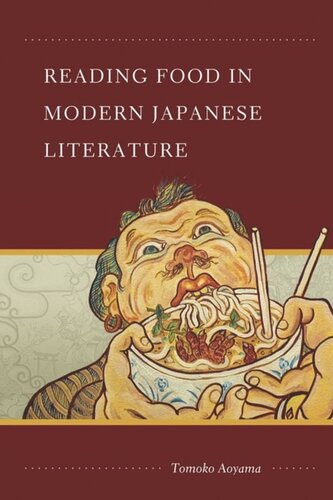

Most ebook files are in PDF format, so you can easily read them using various software such as Foxit Reader or directly on the Google Chrome browser.
Some ebook files are released by publishers in other formats such as .awz, .mobi, .epub, .fb2, etc. You may need to install specific software to read these formats on mobile/PC, such as Calibre.
Please read the tutorial at this link: https://ebookbell.com/faq
We offer FREE conversion to the popular formats you request; however, this may take some time. Therefore, right after payment, please email us, and we will try to provide the service as quickly as possible.
For some exceptional file formats or broken links (if any), please refrain from opening any disputes. Instead, email us first, and we will try to assist within a maximum of 6 hours.
EbookBell Team

0.0
0 reviewsLiterature, like food, is, in Terry Eagleton’s words, "endlessly interpretable," and food, like literature, "looks like an object but is actually a relationship." So how much do we, and should we, read into the way food is represented in literature? Reading Food explores this and other questions in an unusual and fascinating tour of twentieth-century Japanese literature. Tomoko Aoyama analyzes a wide range of diverse writings that focus on food, eating, and cooking and considers how factors such as industrialization, urbanization, nationalism, and gender construction have affected people’s relationships to food, nature, and culture, and to each other. The examples she offers are taken from novels (shosetsu) and other literary texts and include well known writers (such as Tanizaki Jun’ichiro, Hayashi Fumiko, Okamoto Kanoko, Kaiko Takeshi, and Yoshimoto Banana) as well as those who are less widely known (Murai Gensai, Nagatsuka Takashi, Sumii Sue, and Numa Shozo).
Food is everywhere in Japanese literature, and early chapters illustrate historical changes and variations in the treatment of food and eating. Examples are drawn from Meiji literary diaries, children’s stories, peasant and proletarian literature, and women’s writing before and after World War II. The author then turns to the theme of cannibalism in serious and popular novels. Key issues include ethical questions about survival, colonization, and cultural identity. The quest for gastronomic gratification is a dominant theme in "gourmet novels." Like cannibalism, the gastronomic journey as a literary theme is deeply implicated with cultural identity. The final chapter deals specifically with contemporary novels by women, some of which celebrate the inclusiveness of eating (and writing), while others grapple with the fear of eating. Such dread or disgust can be seen as a warning against what the complacent "gourmet boom" of the 1980s and 1990s concealed: the dangers of a market economy, environmental destruction, and continuing gender biases.
Reading Food in Modern Japanese Literature will tempt any reader with an interest in food, literature, and culture. Moreover, it provides appetizing hints for further savoring, digesting, and incorporating textual food.